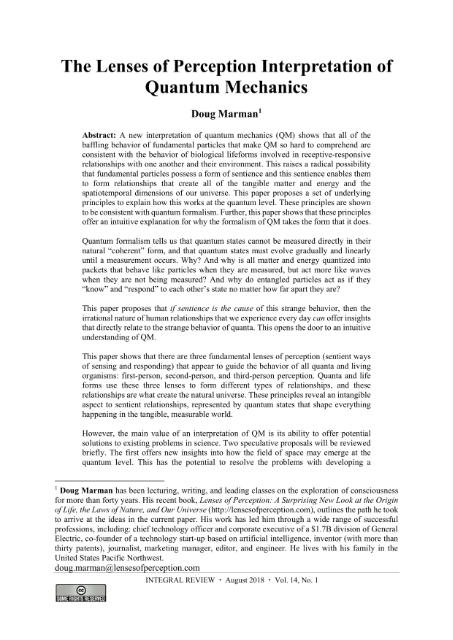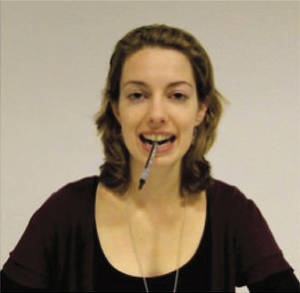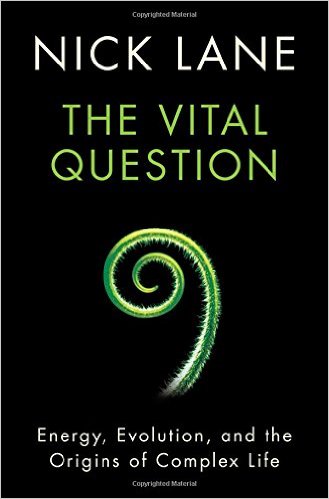By Doug Marman
I gave a talk at York University in Toronto titled, What Psychologists and Quantum Physicists Can Learn From Each Other.
You can see a video recording of the talk further down below in this article. If you are interested in a closer look at the slides, you can download the PowerPoint presentation by clicking on the image below:
 The talk refers to insights gained from my recent paper, The Lenses of Perception Interpretation of Quantum Mechanics, that was recently published in a peer reviewed journal. I show how those new insights at the quantum level offer some interesting new perspectives on psychology.
The talk refers to insights gained from my recent paper, The Lenses of Perception Interpretation of Quantum Mechanics, that was recently published in a peer reviewed journal. I show how those new insights at the quantum level offer some interesting new perspectives on psychology.
The talk is intended to be provocative. It is highly speculative, but it also raises some interesting questions.
A number of the founders of quantum mechanics, such as Niels Bohr, Erwin Schrödinger, and Werner Heisenberg, saw a surprising number of remarkable resemblances between living organisms and quantum behavior. They each wrote and gave lectures on this subject, although they fell short of offering a good explanation for why these similarities exist.
In my talk, I offer an explanation that arose from my interpretation of quantum mechanics. This talk briefly discusses some of the implications for psychology.
You can watch the talk below. There were also a number of interesting questions after the talk was over that I have transcribed and added below, if you are interested.
Questions and Answer:
After the presentation, there were questions from 6-8 different scientists and a few students. It was a lively discussion that seemed to keep everyone glued to their seats. No one left, even though we went way past the one-hour time slot, and school classes were done just before a long holiday weekend. The questions were good ones and show how challenging it is to get our heads around the ideas proposed in this presentation. I would like to thank everyone for their questions and comments, since this is always the most fun part of a presentation.
Q: Thank you for showing the juxtaposition of quantum properties with the properties of organisms. One phenomenon that is just as strange as superposition is the exclusion principle. In the quantum field, with two particles of a particular class of fermions, you cannot force them to be in the same state. Once you try to put them in the same state, they literally repel each other. I don’t think among living things that I observe anything like this. You cannot put two people in the same state or the opposite situation for bosons.
A: Yes, and as you say there is an interesting aspect to this because while fermions act this way, as you say, bosons have no problem being in the same state. If you look at fundamental particles, such as a photon, which is a boson, its relationship is different. A photon is not tied to a photon field the way an electron is tied to an electron field. A photon exists to carry the electromagnetic force from an emitter to an absorber. And when a photon travels from an emitter to an absorber it is traveling at the speed of light. This means that according to the photon’s experience no time passes between emission and absorption. It is as if the moment it is emitted and the moment it is absorbed is the same moment.
That relationship is very different compared to a particle like an electron. An electron is a matter particle with its relationship tied to the electron field. The photon, on the other hand, is carrying a force from an emitter to an absorber. I have written about this in my book, and I show that this explains why a photon has no mass because a photon is not directly tied to specific place in space. Instead, it is tied to this relationship between the emitter and the absorber. That is its role and what is causing it to move from here to there because it is carrying something.
Whereas a particle like an electron, it has a place in space that it occupies. That is why, when you have matter-like particles, they cannot occupy the same place in space. This is the same with human beings, we cannot occupy the same place. If people get packed too close together, there is a push-back just like we see with electrons.
Photons and other bosons are different. They don’t relate to the way that human beings act because bosons have a different role.
Q: So, you are saying that there is no counterpart in organisms with bosons?
A: Yes, that’s right.
Q: I see.
Further answer: Although I ended my answer above this way, it is interesting to point out that people can, at times, take on the role of being a messenger, where we carry a message from one person to another. This is where the saying comes from, “Don’t shoot the messenger.” In other words, there is no need to push back on someone who is acting as a messenger because the message is not coming from them. They only deliver it.
When mail is delivered to our mailbox or our home, we accept what the delivery person gives us, whether it is good news or bad news, whether it is a friendly card or a bill we need to pay, because the messages are for us and they are not coming from the person who delivers the mail. Messengers only carry messages from senders to receivers. In a sense, messengers are go-betweens, which is exactly the way bosons act as well. Thus, the role of a messenger is the same as the role of photons who carry energy and momentum from an emitter to an absorber. In other words, the roles of both messengers and bosons only exist to relay information. This is why they share the same state shared between the sender and receiver of the message they are carrying.
However, as I said above, all organisms inhabit places in space and this means that they all act like fermions and matter-type particles such as electrons.
I should also add here that the exclusion principle being asked about here is called the Pauli exclusion principle, after Wolfgang Pauli who discovered it. It was originally discovered in relation to electrons in the orbitals of atoms. Pauli discovered that electrons can only share an orbital if they possess unique quantum states in relation to each other. For example, they can have opposite spins, or their magnetic moments can be at right angles to each other. This exclusion principle is what limits how many electrons can exist in the same shell of an atom, and this is what causes most of the chemical properties of atoms.
Do we see this behavior with organisms? Yes, we do, but we don’t think of it as exclusion. It shows up in any group of organisms where they are jointly working together for a common purpose, such as the cells in the bodies of a multicellular organism. What is quite remarkable is to see how an egg cell develops after it is fertilized. Shortly after it starts to divide, making clone cells that are virtually identical, a change takes place. Each of the cells starts to specialize in its roll. No two cells play exactly the same role. This ends up being the driving force behind the development of organs, where the cells further specialize even though they are still clones of each other.
What causes this drive for specialization that makes multicellular organisms possible? There is a lot of speculation. Significant research has gone into trying to show that this is somehow driven by information in the genes, but there is growing evidence that specialization is more a product of epi-genetics, which means that it emerges for some reason that isn’t quite clear at the level of the group activity. In other words, the drive for specialization shows up when the cells join together for a common purpose of developing a body.
We see the same behavior in human society. When we form companies, people see the benefits in specializing their work. It is better for the company, and each employee feels better when they know that they have developed a special skill that is needed. We can also see this with children when they are growing up. After they reach the age of 6 or 7, they start to differentiate themselves from each other, often avoiding things that their siblings like to do or are better at. The drive to specialize is also a drive to be unique in how we contribute.
I have shown in my book that this specialization in organisms is surprisingly similar to the exclusion principle in atoms, protons, and neutrons, where the strong force is active. This is a long story, so I will not include it here. However, I will say that the similarity is surprisingly strong.
Q: The middle part of your presentation was all about the similarities between how quanta behave and how organisms behave. I think we were all waiting, because we thought you were preparing us for another part where you explain the mechanics between the two systems. But your solution was to say that if we observe the similarities in order to turn it into a law, we have to show that all phenomenon that we observe on one side we have to also observe on the other side. I think it is not enough, or it is at least not on the same level as trying to come up with a model for how the mechanics on one side can translate into microscopic behavior. And the way we understand quantum mechanics today, or at least the way I understand it, predicts something different. It predicts that because of the law of big numbers and the statistics behind it that macroscopic systems are much more predictable than microscopic systems are. And, of course, we can say that we don’t observe that in psychology or sociology or human behavior, but the way we understand the mechanics of quantum mechanics does not predict what you are suggesting here.
A: The reason that I did not include what you are talking about is because this is a one-hour presentation and there is a lot to get into this issue that you are raising. But I discuss this in my paper. I will give you an example. The question you are asking is why do particles at the quantum level have such strange behavior, but at the macroscopic level we don’t see that. At the macroscopic level things behave more like the old physics where everything happens according to cause and effect. Why does this transition from the microscopic to the macroscopic take place? There is nothing in quantum theory that satisfactorily explains why this happens.
There are different interpretations that try to explain it, such as decoherence theory, that talks about it. But even in decoherence theory, as I show in my paper, there are problems with the theory. For example, decoherence theory assumes that particles are distinct from each other to begin with. Otherwise they could not become entangled with each other. But the theory then suggests that the differences between objects that makes them distinct from each other emerges through a process of entanglement. Now, you can’t assume a distinction between particles at the beginning and then suggest that distinctions between objects emerge at the end. There are contradictions in the theory. On the other hand, I explain in my paper how this approach that I have presented today leads to a solution that solves that problem. And it relates to organisms.
Here is an example: When you have a group, a force emerges that we call peer pressure. When you are part of a group, there is always some peer pressure. The larger the group, the more peer pressure we feel. This pressure holds groups together. Going against the norm requires more effort.
Q: You are on the analogy level again.
A: Okay, what I show first of all in my paper is a series of principles, right down to the basics, about what makes all of this work. And then I show a model, a functional model for how this applies at the quantum physics level, and how this also applies at the level of organisms. What this means is that you can take a lot of these same tools that quantum physicists have learned about quantum states that cannot be measured directly when they are not being measured, and you can apply the same rules at the level of organisms. This was the point I was making in my presentation.
Now I am answering you in a general way, but if you have a specific example you are looking for, I would be glad to get more specific. But the approach I am talking about explains why these quantum effects disappear when we move into the macroscopic world. In fact, that has been the main purpose of my paper, to explain why these things happen. Quantum mechanics has a really good mathematical formalism that has never been proven wrong, but the big problem is what does it mean. Why does nature work this way?
If what I am saying here is true, that these are not just similarities between the behavior of quanta and the behavior of organisms, but they are the same principles at work, because it is about the way individuals with sentience, with some kind of sentient agency, respond to each other, then it opens the door to a new way of understanding what is happening at the quantum level that can lead to new predictions.
At the level of physics, does this new approach solve any problems? Yes, it does. For example, it opens the door to the quantum gravity problem: How do you explain gravity in terms of quantum mechanics? That is one of the big unsolved problems. And my paper offers an explanation for why gravity emerges from the quantum level. It also offers other solutions. My paper goes a lot further in explaining all of this.
Q: My understanding is that if you look at quantum physics, which has very defined rules, and then you try to find some physical aspect in real life that we see, I think you could find any example for any phenomenon. You should not generalize everything like that.
A: No, you shouldn’t. That’s right. Similarities are nice. Maybe they mean something, maybe they don’t. How do you determine this? This is where more testing is needed. But the fact is that one test should be that if this is true, if this is not just a similarity, if this is the same phenomena, then every quantum effect should be visible in the relationships between living organisms. In other words, there is an easy way to disprove it. In fact, I list a number of ways to disprove it, but that is an easy one.
Q: Is it your conclusion that subatomic particles are sentient?
A: Yes, that is what I’m proposing.
Q: What does that even mean?
A: Exactly! What does it mean? And how do you interpret what it means? Here is the issue: When physicists are trying to solve the quantum gravity problem, one of the things that they are now suggesting is the possibility that space is not fundamental. And time is not fundamental…
Q: It sounds like you are saying that rocks are grey and I’m grey, rocks are heavy and I’m heavy, I’m alive, hence rocks are alive. It just doesn’t follow for me.
A: No, it goes much further than that. Take this problem with quantum gravity that I was just starting to talk about. They are now questioning if space is fundamental. That means that space is emerging from something more fundamental at the quantum level. How does it emerge? What they are saying is that relationships between the particles might be forming the state that we call the field of space. And the way the math works, the way they are modelling this is the same way we would say a society is formed by organisms and how they interact. It is very, very similar.
Further answer: After the Q&A session was over and we got together to chat informally, this same scientist made his point again that it sounds like I am saying that if a rock is grey and his beard is grey, that means they are the same. I could see that he didn’t feel I had properly responded to his point. So, I said that what he is talking about is one similarity, and obviously if it is just one similarity it makes no sense to say they are the same. But the question I am asking is what if every trait is similar? At what point do you start to say they are the same? Not just one trait, but every trait. Not just one quantum property but every quantum property. If every trait is the same, at what point do we just admit that they are the same? He seemed more satisfied with that response.
However, I think that what his question was really getting at, as well as the questions of others, is that this is not good enough to be satisfying as a proof that the behavior between quanta and the behavior between organisms are the same based only on a list of similarities. I agree with this and I say the same thing in my paper. It is not satisfying by itself to say this alone. In fact, in my paper, I say that this is nothing more than an informal test to see if I can disprove the theory. The fact that the theory holds up after examining a dozen of the most significant quantum effects is surprising and unexpected. But this is not satisfying as a proof.
To put this another way, how do we verify whether an interpretation of any kind is correct when it comes to quantum mechanics? This is not just an issue for the theory that I am suggesting. This is the core issue at the heart of all interpretations of quantum mechanics. And physicists agree that there is only one truly valid test to determine whether an interpretation is valid. That core issue is how that interpretation fares in relation to the formalism of quantum mechanics.
The reason for this is that the formalism is what physicists have the most faith in because no one has ever found a case where it doesn’t work or that it gives the wrong answer. Therefore, the question that an interpretation needs to offer, at a minimum, is an explanation for what the formalism is trying to tell us about the world.
This is why the bulk of my paper focuses on showing how underlying principles based on sentience are indeed consistent with quantum formalism. But I go further than this usual test and show how the underlying principles can actually offer an explanation for why quantum formalism takes the form that it does. As far as I know, explaining the formalism from a set of simple principles has never been done before. Plus, it shows this through an intuitive explanation that we can relate to as human beings because the same principles apply to our lives. In addition, my paper offers a model for how this works.
However, the most important test, after showing an interpretation is consistent with the formalism of quantum mechanics, is to see if it can predict new solutions to existing problems. And this is also what I offer in my paper. The testing of those predictions, many of which are surprising, is the best way toward arriving at a level of satisfaction before we adopt an interpretation. This is the bottom line that all interpretations need to address to become accepted.
It is also worth mentioning that all interpretations of quantum mechanics are a bit crazy. Most are more than a little crazy. In fact, Niels Bohr admitted that any valid interpretation would have to sound crazy because quantum mechanics itself is crazy. Bohr often ruled interpretations out simply because they weren’t crazy enough. For a quote on this, see my paper.
Q: Another example that exists at the quantum level is quantum tunneling. Do you have an example for that?
A: Quantum tunneling, yes, that is the result of the superposition principle. This is used in transistors. An electron is not actually in one location until it exchanges energy of some kind. So that means that it could be on one side of a silicon gate or it could be on the other. Probability says that a certain percent of the time it is going to be on one said, and another percent of the time it will be on the other side. If the space is small enough, this is what will happen. This is called tunneling. Does the electron actually go through the gate and tunnel through? No, it appears on this side and then it leaps to that side.
Q: I thought that tunneling and superposition were a bit different. But anyways, can you find any examples of this, being on one side and then another, happening in living things?
A: I just gave an example in my presentation: First we are on the left side of the brain and then we switch to the right side of the brain. One moment you’re seeing through the right eye and the next moment you’re seeing through the left eye. As soon as vision becomes conscious, you are choosing between one or the other.
Q: I’m not convinced.
A: I’m not asking anyone to be convinced. The purpose of this is to look at these as possibilities. Is this convincing? No, because it is so strange.
Q: But the object you are looking at is always in one position.
A: Yes, if it is a macroscopic object.
Q: Can you give an example of a macroscopic object that is in one position and then another?
A: No. The reason that macroscopic objects are only in one position and are not jumping around is because you are looking at billions of particles. You will never see objects like that jumping around and physics tells us that we will not see this. But one particle, one individual, is not always in just one position at a time.
In other words, this is all about the massive number of particles in that object. For example, a mound of dirt is not going to be jumping around because it is a huge mass of separate particles. Our body is a mass of cells, so you don’t see our body jumping around. We only see quantum effects when we are looking at individual agents.
Q: So, you cannot explain this at the macroscopic level?
A: Physicists know that things at the quantum level act differently than they do at the macroscopic level, but they don’t have a consistent theory that explains why. Why does this transition happen? In fact, this is called the limit problem. Why do quantum effects disappear at the macroscopic limit? And the fact is that it happens very similarly to what we see in human behavior.
Individuals in small groups are much more spontaneous and unpredictable. In large groups, they act more controlled. They act more in line with the group. In large institutions there is much more red tape, much more control. Small companies, on the other hand, have far more spontaneous activity and a greater sense of freedom. What it feels like to be in a family is far different than how it feels to be in a large company. Institutions can seem impersonal, while small groups are more personal.
So, what is happening is that as the group gets larger and larger, there is more restriction. There is more of a sense of control. Going against the norm takes more effort. What we never see on the human level is groups with trillions and trillions of people like we see with atoms and fundamental particles because we just don’t that many humans on this planet. But you do see the same transition and the same limit that emerges as a group grows larger. So, the math and the model I am proposing hold up.
Is it convincing? No, this is still speculation. But it is surprising to see these similarities. There is nothing in quantum theory to suggest that we should see any of these quantum behaviors between organisms.
Q: Back to the superposition principle. At the quantum level, if you look at the math about the interference between two states, the two states happen at the same time. It is not like the electron is shifting between spin-up and spin-down states. Whereas, when we think of two things at the same time, or the two sides of the brain, it is either or, when we shift quickly. So, this is not quite the same.
A: No, actually if you look at the processing the brain is doing before it becomes conscious, the unconscious processing, not the conscious perception, the brain is actually processing data from the left eye and the right at the same time.
Q: So, when it decides to do something that’s the measurement?
A: Exactly. When it hits your conscious perception, that’s when it switches.
Q: All right. Then what bothers me is we know in quantum physics that once you have a large number of these things that the laws of large numbers will make everything certain. Where is the microscopic brain that we have? You are saying that our brain is acting as if it is microscopic when it is unconscious.
A: No, actually, most of the processing in our brain is beyond that crossover point, which is why most neuroscientists ignore the quantum effects. There are some theories out there that perhaps consciousness emerges from the brain because of quantum effects but there are a lot more people that disagree with that theory. But that is not what I’m talking about. What I am talking about is where does the crossover happen between quantum and traditional physics?
Niels Bohr did not know where this crossover happens. He thought the line could move. Others said no, the line can’t move, it depends on how you are measuring it. There is a lot of confusion about this. The theory I am proposing makes it very clear. At the level where you see individual agents interacting, that is where you see quantum effects. And when it becomes impersonal group behavior, the quantum effects disappear. The quantum effects get nullified. They get averaged out more and more as the group gets larger and larger.
If you think about all the atoms in your body, if they all shifted to the right at the same time, your body would shift. They don’t do that because they are all individuals. They all cancel out each other’s quantum shifting. This is why at the classical level, at the large level, you do not see that. And the thing that is interesting is that this theory I am proposing gives us a reason.
Now, is that reason useful? Can you use it? Yes, it helps explain the quantum gravity problem that physicists have been running up against because it shows you that the field of space is like a society for all of the particles in the universe. That is why they follow laws like the laws of physics that are so repeatable on the statistical level. In the paper I go into this in a lot more detail.
Further answer: I should have been clearer about how this switching from the left side of the brain to the right side of the brain takes place if this is a case of superposition, as I am proposing.
The question this scientist was asking was how the brain is behaving as if it is microscopic, like quantum particles, to display properties of superposition. As I explained, the reason this also happens at the level of organisms is because they are acting like sentient agents. Wherever we see sentient agents interacting with each other we are going to see quantum effects, because this is exactly where quantum behavior comes from. It comes from responsive relationships between sentient agents.
Now, what does this mean at the level of brain cells? Well, since each cell acts as a sentient agent, we should see quantum states in their relationships with each other. But we, the being who inhabits our body, is also a sentient agent. This means that there will also be quantum effects emerging from the relationships between us and the cells of our body. These effects will include entanglement and superposition states. When we engage with our body to initiate some action, we are then acting from a specific place in our body. This is why, when we are consciously looking at something, our conscious vision switches from one eye to another. Before our vision becomes conscious, we have a superposition of both the right eye and the left eye. We actually have a relational state with the cells in both eyes. But then something in the vision from one of the eyes catches our attention and we then switch to that eye. We also switch back and forth between the left side of our brain and right side when this happens. This is not just for vision. We switch back and forth from the left side to the right side of our brain all the time.
Q: It feels like you are reviving vitalism. Your atoms are now sentient. We don’t know where that sentience comes from, but it is there, and it affects people and plants and particles apparently. Whereas, in the science where I grew up, we try to go the other way. We try to start with the particle level and understand bigger and bigger systems until we understand what life is and how brains work. You have turned this upside-down. You start with sentience.
A: Yes, consciousness is at the beginning, not at the end.
Q: Doesn’t that need an explanation?
A: Philosophers call this panpsychism. It is the theory that every particle has sentience of some kind.
It turns out that there’s a big problem when it comes to explaining consciousness. Philosophers call this “the hard problem.” And obviously there are two different theories. One theory says that consciousness emerges from the brain somehow, from interactions in the brain. And there has been a lot of attempts to understand that, but there has been no progress in offering even a possible theory about how that might happen.
Panpsychism, on the other hand, suggests a different approach because all particles are conscious to begin with. The famous philosopher who talked about this hard problem is David Chalmers, and he has generated a lot of interest because objective science has not been able to solve this problem. And lately he has been coming to the conclusion that one viable solution is panpsychism.
But, according to Chalmers, if we go down the path of panpsychism, then we face new problems. He raised three major issues, called “the three combination problems,” that have to be solved. I talk about these in my paper. It turns out that what I have proposed leads to a solution to these three problems as well.
Q: Is it fair to say that mind cannot understand consciousness because consciousness has to become conscious of itself to understand it?
A: Yes, but my paper doesn’t go to that level. My paper says this: The whole mind-body problem that philosophers have talked about—how does the mind cause the body to move?—this theory can offer some explanations for this. For example, if you want to raise your hand, your hand goes up. But do you know how to make your hand go up? Do you know which muscles to move to make your hand go up? No. We don’t know how to do that.
If you were running down the street, do you know which muscles and in which order to get yourself moving? No, we’re not doing that consciously. It’s happening unconsciously. And if we started trying to do it consciously, you’d look like a broken robot, it wouldn’t be graceful at all because our conscious mind process is too slow to make all the things needed to happen at the right time. What that means is that there is unconscious behavior that is making all those things that we need to do to allow us to run. And as I said in my presentation, all unconscious behaviors are quantum behaviors.
How does the mind, or “us,” the agents in our bodies, cause our bodies to move? We are asking about the relationship between us as the agent and all the cells in our body. That is a quantum entangled state. And it is very similar to the state that three quarks form when they create a proton. They exist in a state that only exists when all three quarks complement each other and work with each other at the same time. There is no moment before the strong force activates that pulls the quarks together. The state only exists after all three quarks come together at the same time. And the same thing happens with the creation of an atom. So, an individual, like a proton, emerges from a state only when three particles become entangled together. This is only a brief explanation but hopefully you can get a sense of how this new approach offers a different perspective.
Further answer: I am in the process of writing a paper that explores the question of biology in a lot more detail. The question comes down to answering what it is that makes organisms alive. It turns out that a number of the founders of quantum physics felt that they were close to solving this puzzle, but they fell short because they couldn’t explain why there were such surprising similarities between quantum states and the states of living creatures. The theory of sentient particles I am proposing here opens some interesting new doors to explore the question of life.
This is, of course, all highly speculative at this point, but science often learns new ways of studying problems by using new perspectives and new lenses of perception.
The amazing similarity between the Reproducibility Crisis in psychology and the Measurement Problem in quantum physics is worth considering, especially when it is just one of dozens of surprising resemblances.








